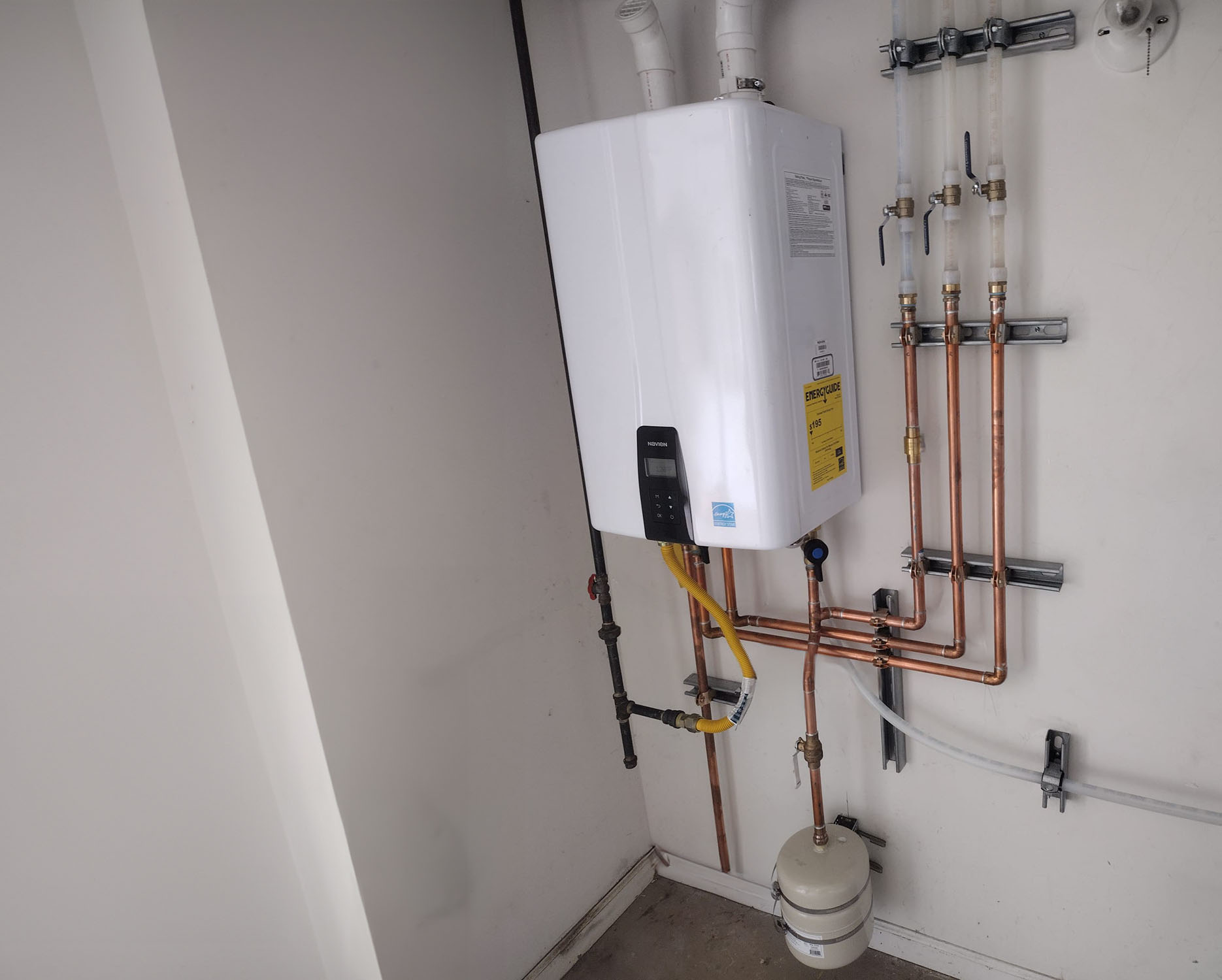

Endless Hot Water
Your trusted partner for professional home services. Quality workmanship, guaranteed satisfaction.




- HEP
- Endless Hot Water
Endless Hot Water | Tankless Water Heater Install | Plumbing | Washburn
Tired of those icy surprises halfway through your shower? HEP Plumbing brings Washburn homeowners the comfort of endless hot water with a professional tankless water heater install that frees up space, lowers energy bills, and delivers piping-hot water on demand. Our licensed technicians remove bulky, outdated tanks and replace them with sleek, high-efficiency units that heat water only when you need it—so you never pay to store gallons you won’t use.
From the first call to the final test run, we handle everything: precise sizing, expert venting, clean electrical and gas hookups, and a thorough walkthrough of your new system. If you’re ready for reliable, eco-friendly warmth and a longer-lasting water heater backed by local service you can trust, schedule your tankless water heater install with HEP today and experience hot water the way it should be—limitless.
FAQs
How does a tankless water heater deliver “endless” hot water for my Washburn home?
Unlike storage-tank heaters that heat a finite volume of water, a tankless (on-demand) unit uses high-output burners or electric elements that fire up the moment a hot-water tap opens. Cold water passes through a heat exchanger and exits the unit at the set temperature, so you can shower, do laundry, and run the dishwasher back-to-back without waiting for a tank to refill. When the tap closes, the burners shut off, eliminating standby heat loss.
What advantages does a tankless system offer in Washburn’s cold climate?
1. Continuous supply: Even when incoming groundwater temperatures drop below 40 °F, a properly sized unit still delivers 120 °F+ water nonstop. 2. Energy savings: Tankless heaters avoid the 24/7 heat loss of a storage tank, cutting gas or electric bills 20–40 %—especially valuable during long North Dakota winters. 3. Space savings: Wall-mounted units free up floor space for storage or a utility sink. 4. Freeze protection: Modern models include built-in heaters and thermostats that protect the heat exchanger down to –30 °F, a must for unconditioned basements or garages. 5. Longer life: With routine maintenance, tankless units last 18–25 years—roughly double the span of a tank heater.
How do I know what size and type of tankless water heater I need?
Sizing is based on peak demand (gallons per minute, GPM) and required temperature rise (difference between incoming groundwater and desired output). Our installers: • List simultaneous fixtures you want to run (e.g., two showers + washer = 6.5 GPM). • Measure groundwater temperature in Washburn (typically 40–45 °F). • Select a model that can raise that water 75–80 °F at the calculated flow rate. Gas units (natural gas or propane) handle higher GPM, while electric units suit smaller households or point-of-use applications. We provide a free in-home assessment and written sizing report before you purchase.
What is involved in the installation process and how long does it take?
Most whole-home conversions take one working day: 1. Drain and remove the old tank. 2. Mount the new tankless unit on an exterior or interior wall. 3. Upgrade gas line or electrical service if needed (tankless units draw higher BTU or amperage when firing). 4. Install Category III/IV venting or concentric intake/exhaust piping. 5. Connect water lines with isolation valves, a flush port, and pressure relief valve. 6. Program controller, test for leaks, and verify temperature at each fixture. Permits and inspections are handled by our licensed master plumber, and we haul away the old tank at no charge.
Will a tankless water heater really save me money?
Yes. According to the U.S. Department of Energy, households that use 41 gallons of hot water per day or less save 24–34 % compared with a standard tank. Even high-demand homes save 8–14 % once a circulation loop or multiple units are installed. In Washburn, where winter heating costs are significant, homeowners typically recoup the higher upfront cost in 4–7 years through: • 20–40 % lower gas or electric bills • Possible utility rebates and federal tax credits up to $600 • Reduced risk of catastrophic tank leaks and water damage.
What maintenance does a tankless unit require and how long will it last?
1. Annual flush: Because Washburn has moderately hard water, we recommend a yearly 45-minute vinegar or citric-acid flush to remove scale from the heat exchanger. 2. Screen cleaning: Check the cold-water inlet filter every 6 months. 3. Combustion check: Gas models need a quick burner and vent inspection each year. Following these steps keeps efficiency high and warranty valid. Stainless-steel heat exchangers are rated for 20+ years, and many manufacturers offer 15-year heat-exchanger warranties. We provide low-cost service plans and remind you when maintenance is due.